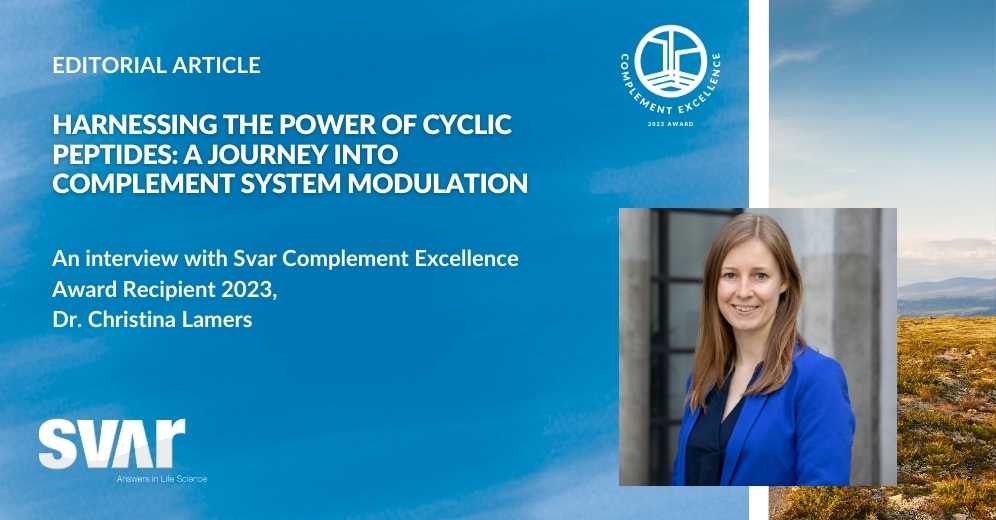- Other Products
- CCP
Dr. Christina Lamers, a pharmacist with a passion for developing new therapeutics through medicinal chemistry, found her interest in the immune system while studying metabolic syndrome. Under the guidance of Dr. Daniel Ricklin in Basel, she delved into the complement field, aiming to use cyclic peptides to develop novel therapeutics.
Alongside her research, Dr. Lamers is dedicated to teaching and mentoring, aiming to cultivate a new generation of complement researchers. “Working with students and researchers allows me to challenge my own ideas and assumptions. They often bring fresh perspectives and ask thought-provoking questions. It is incredibly rewarding to develop novel project ideas that were sparked by their questions,” says Dr. Lamers.
In this interview, Dr. Lamers discusses the advantages of cyclic peptides as therapeutic compounds and how structural insights will allow the development of novel complement inhibitors and research tools.


Dr. Christina Lamers, a pharmacist with a passion for developing new therapeutics through medicinal chemistry, found her interest in the immune system while studying metabolic syndrome. Under the guidance of Dr. Daniel Ricklin in Basel, she delved into the complement field, aiming to use cyclic peptides to develop novel therapeutics.
Alongside her research, Dr. Lamers is dedicated to teaching and mentoring, aiming to cultivate a new generation of complement researchers. “Working with students and researchers allows me to challenge my own ideas and assumptions. They often bring fresh perspectives and ask thought-provoking questions. It is incredibly rewarding to develop novel project ideas that were sparked by their questions,” says Dr. Lamers.
In this interview, Dr. Lamers discusses the advantages of cyclic peptides as therapeutic compounds and how structural insights will allow the development of novel complement inhibitors and research tools.
“Receiving the Svar Excellence Award represents a significant milestone in my career in the complement field. It is a huge honor, especially coming from the medicinal chemistry side and being recognized by a renowned committee of people whose papers I have always cited. It feels amazing and serves as validation for the hard work and contributions made in the field." Dr. Christina Lamers
The Svar Complement Excellence Award is distributed annually to individuals who have greatly contributed to the complement field.
The awards are intended as grants for two recipients, each worth €20.000. The awards will be used to support the projects the recipients are working on within the complement field.
The committee consists of members of the International Complement Society (ICS) and the European Complement Network (ECN), as well as last year's awardees and one pharma representative.